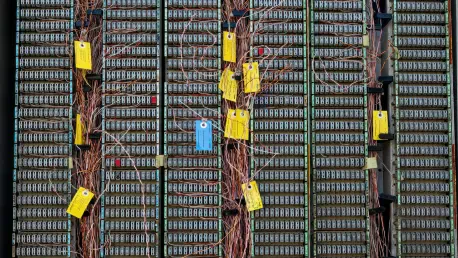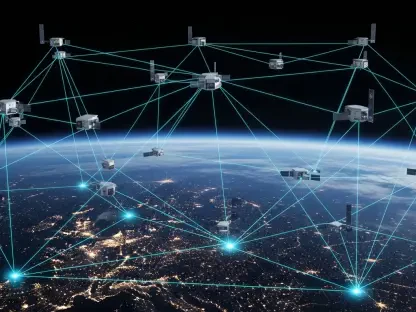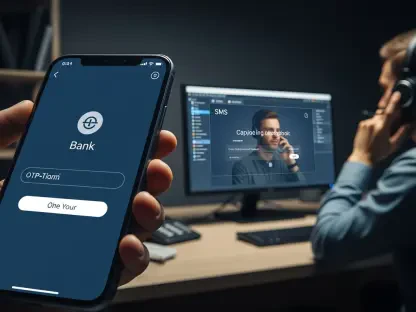As the telecom industry grapples with escalating challenges, few issues are as pressing as the surge in copper theft and vandalism affecting major operators. Today, we’re thrilled to sit down with Vladislav Zaimov, a seasoned telecommunications specialist with deep expertise in enterprise networks and risk management of vulnerable infrastructure. With years of experience navigating the complexities of telecom security, Vladislav offers a unique perspective on the rising incidents of theft, the financial and operational toll on companies, and the innovative strategies being deployed to combat this growing problem. In our conversation, we explore the scale of the issue, the hotspots driving these crimes, the value of copper in today’s market, and the broader industry efforts to protect critical networks.
How significant is the issue of copper theft and vandalism for major telecom companies this year?
It’s a massive problem, and the numbers speak for themselves. Take AT&T, for instance—they’ve reported over 7,000 incidents of theft and vandalism in 2025 alone. That’s not just a minor inconvenience; it’s a major operational and financial burden. The cost to repair the damage and restore networks has exceeded $60 million for them, which is money that could have gone toward expanding or upgrading infrastructure. This isn’t just about replacing stolen materials—it’s about downtime, customer dissatisfaction, and diverting resources from critical projects like network deployment. It’s a ripple effect that impacts the entire industry.
What are some of the regions most affected by this wave of vandalism, and why do you think that’s the case?
Certain areas are definitely seeing more of these incidents than others. California and Texas, for example, account for a huge chunk of vandalism cases for companies like Verizon—about half of their total incidents. I think it comes down to a mix of factors. These states have dense populations and extensive telecom infrastructure, which means more opportunities for thieves. You’ve also got urban and rural areas side by side, so there are plenty of isolated spots where vandals can strike without much risk of getting caught. Plus, economic conditions and the presence of markets for stolen goods might play a role in making these locations prime targets.
What steps are telecom companies taking to address and prevent these thefts?
Companies are fighting back on multiple fronts. For starters, they’re pouring resources into repairing damages as quickly as possible to minimize downtime. AT&T and others are also investing in preventive measures, like beefing up physical security around vulnerable sites—think more robust enclosures or surveillance systems. Some are exploring tech solutions, like tracking systems or sensors that can alert them to tampering in real time. There’s also a push to speed up the transition from copper to fiber, since fiber isn’t as valuable to thieves. But it’s a slow process, and in the meantime, they’re working hard to secure what’s out there.
How can public awareness help in reducing copper theft, and what kind of campaigns might make a difference?
Public awareness can be a game-changer if done right. A lot of these thefts happen in plain sight, and communities often don’t realize the impact or even notice suspicious activity. Campaigns like “if you see something, say something” can encourage people to report unusual behavior around telecom infrastructure. I think these initiatives are most effective when they’re localized—partnering with neighborhood watch groups or schools to spread the word. I’d also like to see law enforcement and government agencies push stronger messaging about the consequences of theft, not just for the companies but for public safety, since these incidents can disrupt emergency services.
Can you tell us more about the industry-wide efforts to tackle network vandalism?
The industry is coming together in a big way to address this. One key initiative is the STRIKE coalition, recently launched by groups like NCTA and SCTE alongside telecom executives. Their goal is to coordinate action against criminal attacks on broadband infrastructure—think of it as a united front to lobby for stricter laws, share best practices, and raise awareness. They’re pushing for vandalism to be treated more seriously, since it’s only classified as a felony in about half the states. Beyond that, you’ve got law enforcement task forces in places like California and Kentucky specifically targeting copper theft, which shows how collaborative efforts are starting to take shape.
Why does copper remain such an attractive target for thieves even as technology evolves?
Copper’s value hasn’t diminished, even with the shift to fiber. Right now, it’s priced at around $5.10 per pound, and that’s a strong incentive for thieves. Its demand is driven by industries like data centers, which use it extensively for cabling, power systems, and even cooling tech. As these sectors grow, so does the market for copper—legitimate or not. Recyclers are willing to pay good money for it, and unfortunately, that creates a pipeline for stolen materials. Until we can fully phase out copper infrastructure or disrupt that secondary market, it’s going to stay a hot commodity for criminals.
What are some of the obstacles telecom companies face when trying to remove old copper lines?
Removing copper isn’t as simple as it sounds. For one, there’s a huge amount of legacy infrastructure still in place, and replacing it with fiber takes time and money. You’re talking about millions of miles of lines in some cases, often in hard-to-reach or rural areas. Then there are regulatory hurdles—some areas have strict rules about maintaining certain levels of service, which can slow down the decommissioning process. Logistically, it’s a nightmare to coordinate, especially when companies are already stretched thin dealing with theft and repairs. It’s a catch-22: you want to get rid of copper to stop theft, but the theft itself drains the resources needed to make that transition.
How common is it for vandals to mistake fiber lines for copper, and what are the consequences of that mix-up?
It happens more often than you’d think. Vandals aren’t always experts—they see a cable and assume it’s copper, only to cut into fiber instead. When that happens, the damage can be even worse because fiber is more complex and expensive to repair. I’ve heard of cases where thieves have severed critical lines, knocking out internet and phone services for entire communities, only to walk away empty-handed. The repair costs skyrocket, and the downtime can last days or weeks. It’s a frustrating trend for companies, especially since it underscores how indiscriminate these crimes can be.
What is your forecast for the future of copper theft and telecom infrastructure security?
I think we’re at a turning point. If the industry can accelerate the shift to fiber and strengthen collaboration with law enforcement and recyclers, we could see a decline in copper theft over the next decade. But that’s a big “if.” The demand for copper isn’t going away anytime soon, especially with tech sectors like data centers expanding. I expect we’ll see more investment in smart security solutions—think AI-driven monitoring or advanced tracking for materials. At the same time, if public awareness campaigns and stricter penalties gain traction, that could deter some of these crimes. It’s going to be a battle, but I’m cautiously optimistic that with the right strategies, telecom companies can stay ahead of the thieves.









